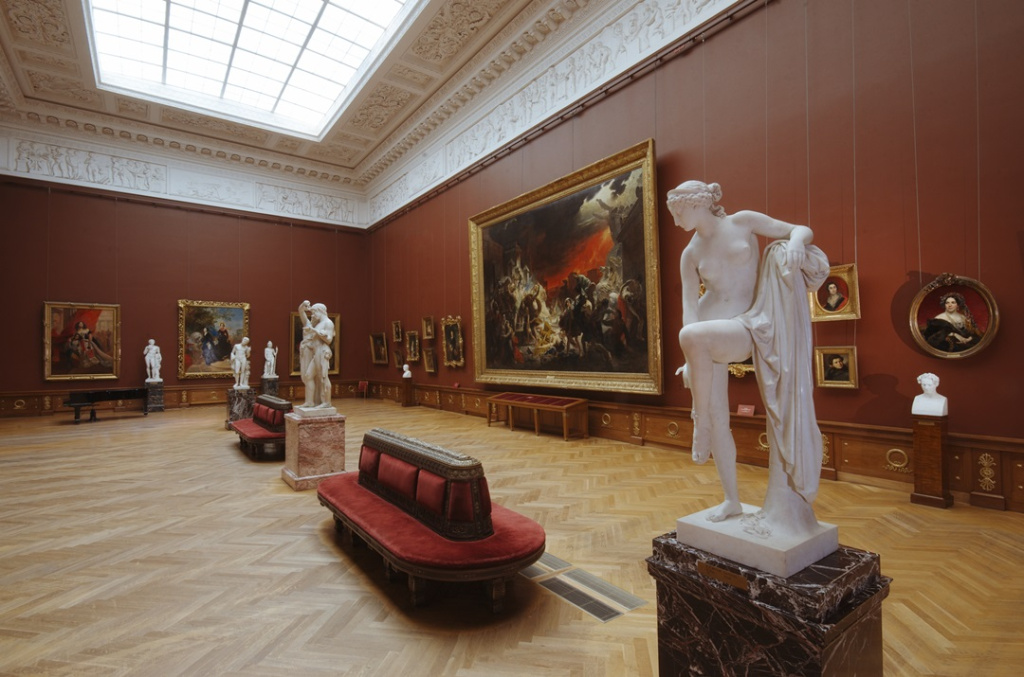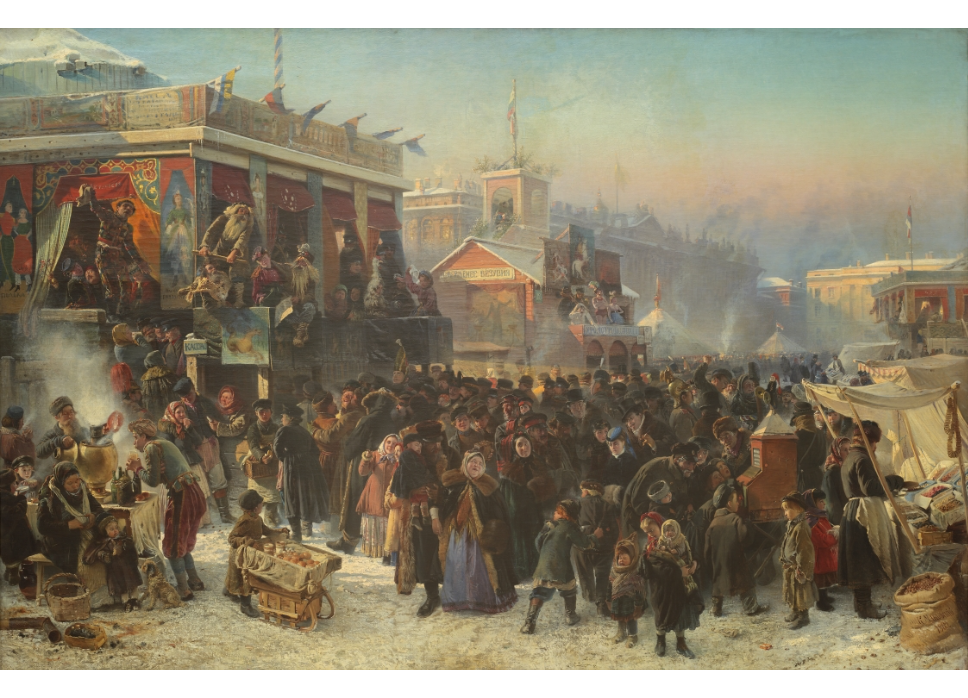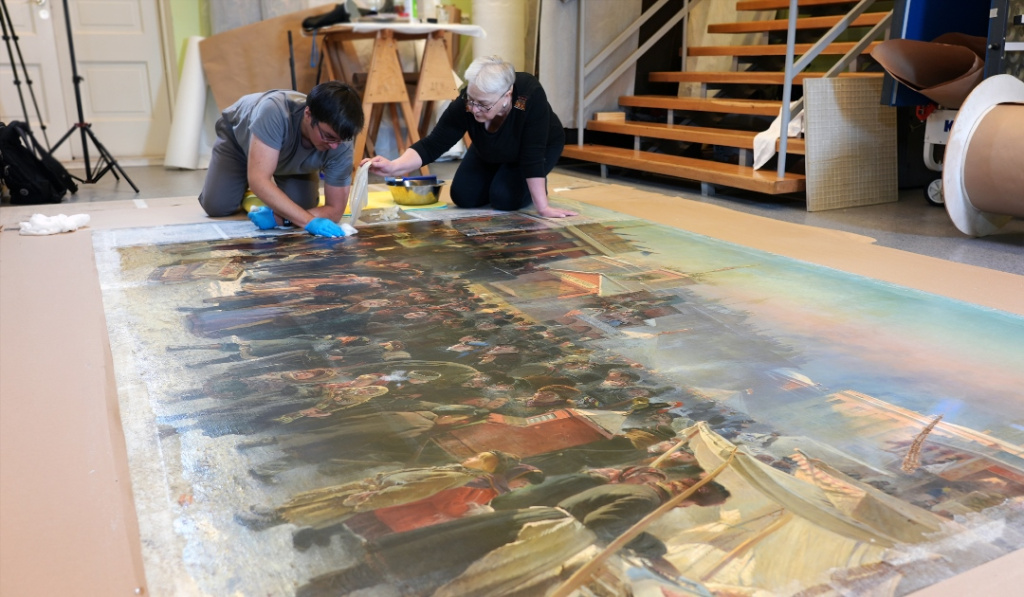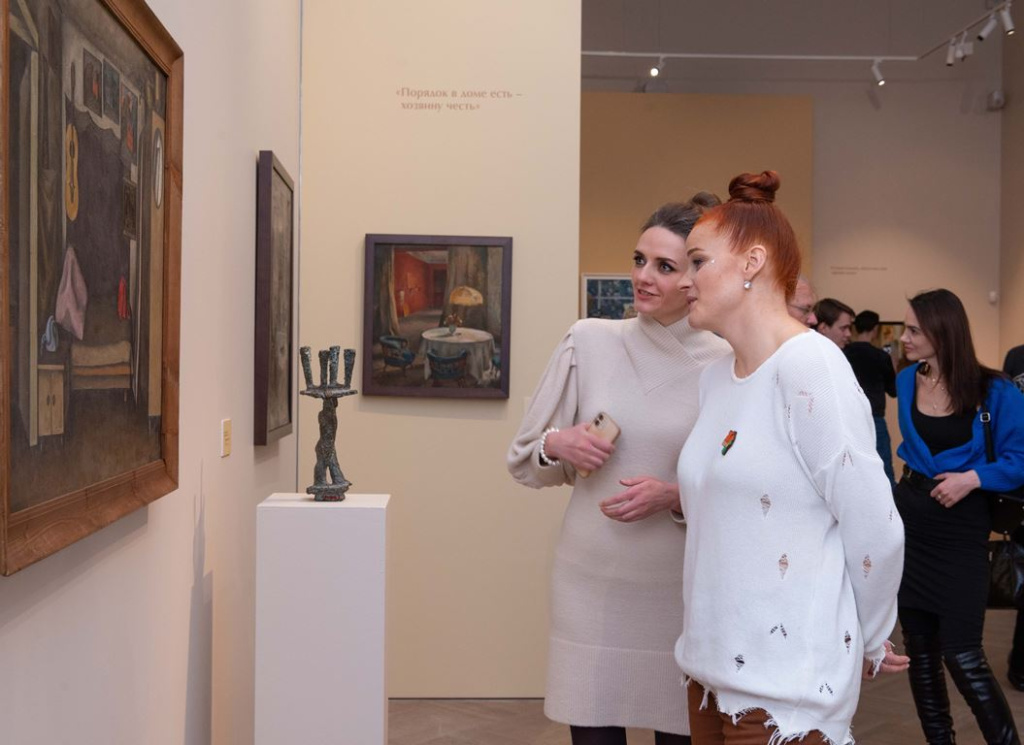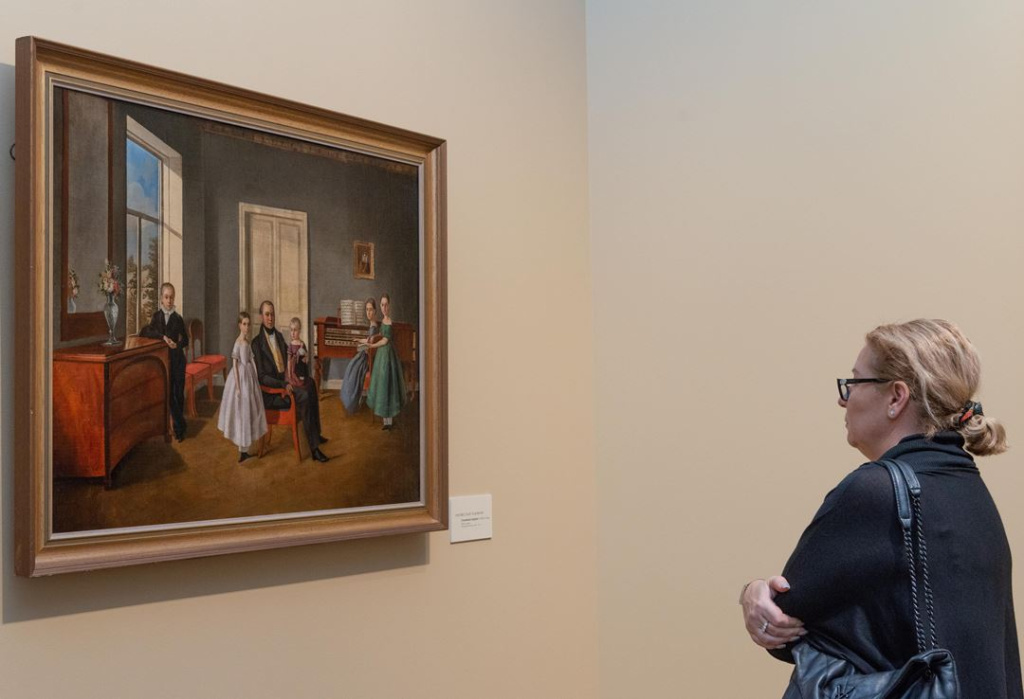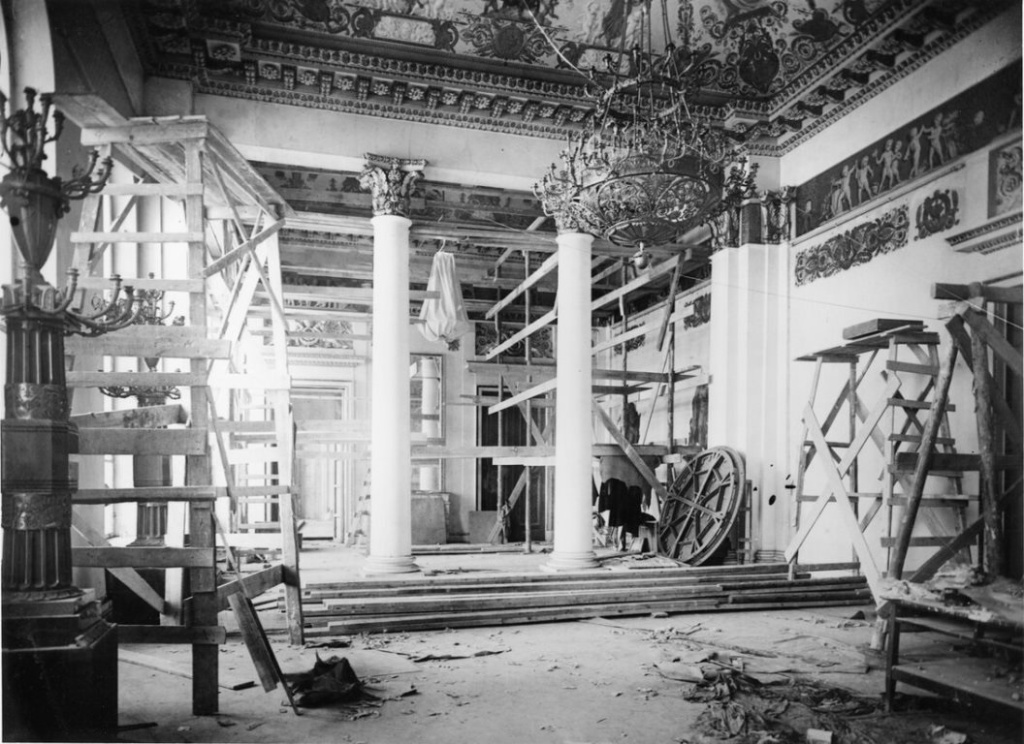Sergey Vinogradov
Mikhailovsky Palace. Photo credit: Press Service of the Russian Museum
The Russian Museum, Russia's first state museum of national art, celebrated its 125th anniversary on March 19. The celebration resounded all over the country. The festive events were prepared by all branches and virtual representations in Russia and abroad, from Kazan to Kogalym, from Rome and Helsinki to Antarctica.
Today the Russian Museum features one of the largest collections of Russian art, 14 historic buildings, almost 445,000 depository items, and more than 2,500,000 visitors a year. The number of exhibits in the Russian Museum has grown almost 300 times during the 125 years of its existence.
125 years for 125 rubles
On March 19, guests were welcomed in the Mikhailovsky Palace, the main building of the museum, by re-enactors wearing historical costumes of the late 19th century and legendary figures from Alexander III to Ilya Repin associated with the history of the museum. On the day of its 125th anniversary, the visitors were charged 125 rubles for admission. The main event of the celebration was the kick-off of the musical marathon, which is to be held in the Museum's palaces for several years.
Yevgeniya Petrova, deputy director general for academic research, explained why exhibitions of Vasily Surikov's paintings hold a special place in the anniversary program of the Russian Museum.
"It is the 175th anniversary of Vasily Surikov and the 125th anniversary of the Russian Museum," she said. "He was among the artists whose paintings were presented at the first exposition of the Russian Museum in 1898. Some of the paintings in the Museum rooms were the first paintings during the Museum's establishment. We are showing beautiful, gorgeous, joyful exhibitions in St. Petersburg and other Russian cities to celebrate our anniversary. One of them is "Fairy Tale in the Work of Russian Artists." It features paintings, sculptures, and folk art.”
Olga Babina, deputy general director for registration, preservation, and restoration of museum values, pointed out that the Russian Museum has not only a collection of masterpieces but also a unique historical archive.
First Academic Hall, Mikhailovsky Palace, The Russian Museum. Photo credit: Press Service of the Russian Museum
"Our extensive archive has documents related to the history of the museum establishment, as well as to the opening of the exhibition," she said. "As a reminder, the very first statute of the Russian Museum stated that 'the rightness of the decision to set up a museum in the Mikhailovsky Palace will be proven by its viability <...> such a museum could be a unique establishment in the world attracting not tens but hundreds of thousands of visitors'. Today millions of visitors attend the Russian Museum.”
According to Olga Babina, the program for the 125th anniversary was made to show the Russian Museum today. The concept included not only the great rooms but also the backstage of one of the major museums in Russia. The work of conservation professionals, for instance, will be shown to the fullest extent. The Mikhailovsky Palace has opened an exhibition devoted to the restoration of Konstantin Makovsky's large-scale Shrovetide Fete on Admiralty Square in St Petersburg, and the original frame of this artwork.
Shrovetide Fete on Admiralty Square in St Petersburg by Konstantin Makovsky, 1869. Photo credit: The Virtual Russian Museum
The full-scale comprehensive restoration of the painting (by Marat Dashkin and Olga Klenova) and its historical frame was completed at the Russian Museum just before the Shrovetide Week celebration in 2023.
Restoration of the painting. Photo credit: Press Service of the Russian Museum
Shortly before the big event, journalists were invited to the Russian Museum on the day when it was closed to visitors. They saw how the Vasiliy Surikov collection was being prepared to be sent to Krasnoyarsk for the exhibition.
“You now see what the museum is doing on its day off," Olga Babina remarked addressing the guests. "It does not take rest. The museum is busy with people, and different kinds of tasks. The departments keep working. The museum is not a quiet haven where people nestle but a bubbling and constantly changing living organism.”
It is possible to celebrate the 125th anniversary of the Russian Museum from any location around the world in a remote way. For instance, on March 22, the museum held its first virtual tour in Russian and French via
YouTube channel and
VKontakte web-platforms. The event was supported by the Russian House in Brussels. Visitors were able to see the current appearance of the museum and its collections, as well as to learn how its rooms have changed over the past 125 years.
The Russian Museum made significant efforts to expand its activities in the virtual environment during the times of the pandemic. In 2020, when the coronavirus hit Russia, the
Russian Museum's online broadcasts attracted almost twenty-five million viewers. The experience of arranging exhibitions for virtual branches was of great help. Today, the restrictions have been lifted. However, the Russian Museum continues to delight its worldwide fans found through online projects with new events.
The Russian Museum in Figures
The figures provide a clear indication of how the museum lives now and its performance through the challenging year of 2022. About two and a half million people visit the museum annually.
Last year, 2,651,688 people visited the exhibitions and programs of the Russian Museum (more than 18,000 visitors were holders of the Pushkin Card). The Museum hosted almost 9,000 tours and more than 40 conferences, seminars, and round tables.
Visitors to the Museum. Photo credit: Press Service of the Russian Museum
Photo credit: Press Service of the Russian Museum
As of 2023, there are almost 445,000 pieces in the collection of the Russian Museum. Currently, 38 permanent exhibitions are open. Last year more than 4,600 pieces were restored.
The Russian Museum has not been limiting its activities to St. Petersburg for a while now. Nowadays, it has 6 cultural and exhibition centers (in Kazan, Yaroslavl, Murmansk, Saransk, Kogalym, and Yoshkar-Ola). There are more than 170 virtual museums, with 34 of them working abroad, and another two - in Antarctica. A virtual branch is about to open in the Donetsk Republican Art Museum.
For 125 years, the number of listed buildings in the Russian Museum has increased from three to fourteen, and its territory has grown more than tenfold. After all, the number of exhibits has increased almost 300 (!) times. By the way, in 1898, the new museum had quite a good attendance. It had nearly 120,000 visitors per year.
What are the plans? This year the Russian Museum will open 25 exhibitions in its buildings and arrange 40 exhibitions in the Russian regions.
Younger but not of smaller importance
The Russian Museum is consistently ranked among the top three Russian national art galleries together with the Hermitage and the Tretyakov Gallery. However, it is often listed as third. Is it fair? Well, it is in terms of age. The Russian Museum is more than 40 years younger than the Tretyakov Gallery, and more than a century behind the Hermitage.
Yet, when it comes to attendance, the number of visitors, and exhibit areas, the Russian Museum is not regarded as a "smaller one". It even excels its "colleagues" in a few criteria.
The Russian Museum of His Imperial Majesty Alexander III was opened on March 19, 1898. The gallery was set up in the Mikhailovsky Palace built by the eminent architect Carlo Rossi. Thirty-seven rooms were available for the first visitors to the museum. The first exhibition included items donated from imperial palaces, the Hermitage, and the Academy of Arts (1,880 works in total).
The Rossi Pavilion, Mikhailovsky Garden. Photo credit: Press Service of the Russian Museum
The Russian Museum had three sections arranged: the section commemorating His Imperial Majesty Alexander III, the ethnographic, arts and crafts section, and the Art Gallery. The latter featured paintings from the 18th century and the first half of the 19th century, including The Last Day of Pompeii by Karl Bryullov, The Ninth Wave by Ivan Aivazovsky, and many others.
That was also the time when Russia's largest collection of sculptures of the 18th - early 20th centuries was established. Works of Russian masters were brought in from the Hermitage and the Academy of Arts. After the October Revolution, the most valuable exhibits nationalized from private palaces and estates were taken to the Russian Museum.
During the Soviet era, the Museum expanded and its collection increased. One of the reasons was the exchange of exhibits among the three major gallery museums.
A special chapter in the history of the Russian Museum relates to the events of the Great Patriotic War. The evacuation of museum pieces to the Urals began on July 1, 1941. The collections returned back to the Museum in October 1945. On May 9, 1946, the rooms of the Russian Museum were reopened to the public.
Russian Museum. Restoration of the White Hall, 1946. Photo credit: Press Service of the Russian Museum
In 2015, the first European cultural and exhibition center (branch) of the Russian Museum opened in the Spanish city of Malaga. The branch continues its activities today despite attempts to suppress Russian culture, and Russian art is also represented in it.

